($20, Monsieur Touton Selection):  The Barnard family, owners of the stellar Domaine de Chevalier, one of the top estates in Pessac Léognan, owns Clos des Lunes, a property located in the Sauternes region of Bordeaux. The care they take with their wines from Domaine de Chevalier show in their dry white wines from Clos des Lunes. … Read more
The Barnard family, owners of the stellar Domaine de Chevalier, one of the top estates in Pessac Léognan, owns Clos des Lunes, a property located in the Sauternes region of Bordeaux. The care they take with their wines from Domaine de Chevalier show in their dry white wines from Clos des Lunes. … Read more
All posts by admin
Tenuta di Capezzana’s Ghiaie della Furba
In 1979, Ugo Conti Bonacossi, owner of Tenuta di Capezzana, the leading estate in Carmignano, created a unique Super Tuscan wine, Ghiaie della Furba (literally, pebbles along the Furba stream). It should come as no surprise that a grower in Carmignano should make a Super Tuscan because, after all, Carmignano, not Bolgheri, was the birthplace of the concept. … Read more
Dry Creek Vineyard, Russian River Valley (Sonoma County, California) Chardonnay DCV Block 10 2021
($45): 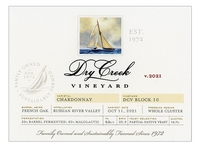 David Stare founded Dry Creek Vineyard over five decades ago, in 1972. Over those five decades, they have an enviable track record of consistency. Though I am reluctant to describe a style by what they are not, it is important to emphasize that Dry Creek Vineyard’s wines are never flamboyant. … Read more
David Stare founded Dry Creek Vineyard over five decades ago, in 1972. Over those five decades, they have an enviable track record of consistency. Though I am reluctant to describe a style by what they are not, it is important to emphasize that Dry Creek Vineyard’s wines are never flamboyant. … Read more
Cline Family Cellars, Carneros (Sonoma County, California) Chardonnay “Hat Strap” 2021
($30):  The Carneros region of Sonoma, and Napa for that matter, is cooler because it abuts San Pablo Bay, which funnels cool Pacific Ocean air into the vineyards. Despite the cooling maritime influences, Cline has managed to create a Chardonnay with substance, reflected by its 14.5 percent stated alcohol, but without going overboard. … Read more
The Carneros region of Sonoma, and Napa for that matter, is cooler because it abuts San Pablo Bay, which funnels cool Pacific Ocean air into the vineyards. Despite the cooling maritime influences, Cline has managed to create a Chardonnay with substance, reflected by its 14.5 percent stated alcohol, but without going overboard. … Read more
Tongue Dancer, Russian River Valley (Sonoma County, California) Chardonnay 2020
($55):  If your idea of California Chardonnay is heavy and buttery, this graceful one with surprise you. Restrained, weighing in at a modest, 13.5 percent-stated alcohol, it nonetheless makes a prominent presence. Despite its apparent lack of power, there’s plenty going on here. … Read more
If your idea of California Chardonnay is heavy and buttery, this graceful one with surprise you. Restrained, weighing in at a modest, 13.5 percent-stated alcohol, it nonetheless makes a prominent presence. Despite its apparent lack of power, there’s plenty going on here. … Read more
Tongue Dancer, Russian River Valley (Sonoma County, California) Chardonnay Bacigalupi Vineyard 2020
($50):  Tongue Dancer has skillfully managed to produce single-vineyard Chardonnay that are different, unique, and demonstrate a stylistic spectrum of the Russian River Valley. This beautifully balanced one displays lavish tropical fruit notes supported by zesty acidity and a welcoming hint of bitterness in the finish. … Read more
Tongue Dancer has skillfully managed to produce single-vineyard Chardonnay that are different, unique, and demonstrate a stylistic spectrum of the Russian River Valley. This beautifully balanced one displays lavish tropical fruit notes supported by zesty acidity and a welcoming hint of bitterness in the finish. … Read more
Tongue Dancer, Russian River Valley (Sonoma County, California) Chardonnay Pratt Vineyard, Irwin Lane 2020
($42):  Tongue Dancer’s Pratt Vineyard Irwin Lane bottling seems like a marriage of their Pratt Vine Hill and their Bacigalupi, with a touch more density and fruitiness compared to the Pratt Vine Hill, but fewer tropical aspects seen in the Bacigalupi. … Read more
Tongue Dancer’s Pratt Vineyard Irwin Lane bottling seems like a marriage of their Pratt Vine Hill and their Bacigalupi, with a touch more density and fruitiness compared to the Pratt Vine Hill, but fewer tropical aspects seen in the Bacigalupi. … Read more
Tongue Dancer, Russian River Valley (Sonoma County, California) Chardonnay Pratt Vineyard, Vine Hill Road 2020
($65): 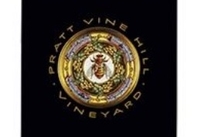 This sleek and racy Chardonnay is the bookend to Tongue Dancer’s tropically infused Bacigalupi Vineyard bottling. With a modest 13.1 percent stated alcohol, the taut Pratt Vine Hill Chardonnay delights the plate with flinty and mineral nuances. It unfolds gloriously as it sits in the glass so don’t be put off by its initial reticence. … Read more
This sleek and racy Chardonnay is the bookend to Tongue Dancer’s tropically infused Bacigalupi Vineyard bottling. With a modest 13.1 percent stated alcohol, the taut Pratt Vine Hill Chardonnay delights the plate with flinty and mineral nuances. It unfolds gloriously as it sits in the glass so don’t be put off by its initial reticence. … Read more
Borthwick Vineyards, Wairarapa (South Island, New Zealand) “Paper Road CPR” 2021
($17, Levecke Imports): 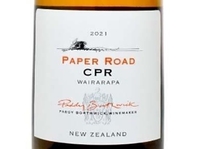 The CPR refers to the blend of this zippy wine: Chardonnay 23%, Pinot Gris 50%, and Riesling. A charmer, it leads with fine and flowery aromatics and then follows with sufficient depth to hold up and balance its energy.… Read more
The CPR refers to the blend of this zippy wine: Chardonnay 23%, Pinot Gris 50%, and Riesling. A charmer, it leads with fine and flowery aromatics and then follows with sufficient depth to hold up and balance its energy.… Read more
Domaine de la Mordorée, Tavel (Rhône Valley, France) “La Dame Rousse” 2022
($25, Kysela Pere et Fils):  Regular WineReviewOnline readers know of my aversion to rosé, which, all too often, is insipid and lacks interest. Not this one! Of course, it comes from Tavel, an appellation that allows producers to make only rosé and from one of the top producers not just in Tavel, but in the entire Rhône Valley. … Read more
Regular WineReviewOnline readers know of my aversion to rosé, which, all too often, is insipid and lacks interest. Not this one! Of course, it comes from Tavel, an appellation that allows producers to make only rosé and from one of the top producers not just in Tavel, but in the entire Rhône Valley. … Read more
Domaine de la Mordorée, Lirac (Rhône Valley, France) “La Dame Rousse” 2020
($35, Kysela Pere et Fils):  Lirac, a lesser-known appellation across the Rhône River from Châteauneuf-du-Pape, is, like that more well-known neighbor, also a cru of the Rhône, a distinction given to a village and its surroundings that makes distinctive wines. So, looking at the Rhône quality pyramid, Lirac sits with Gigondas, Vacqueryas, Châteauneuf-du-Pape and other crus, at the top. … Read more
Lirac, a lesser-known appellation across the Rhône River from Châteauneuf-du-Pape, is, like that more well-known neighbor, also a cru of the Rhône, a distinction given to a village and its surroundings that makes distinctive wines. So, looking at the Rhône quality pyramid, Lirac sits with Gigondas, Vacqueryas, Châteauneuf-du-Pape and other crus, at the top. … Read more
Domaine de la Mordorée, Côtes du Rhône (Rhône Valley, France) 2021
($25, Kysela Pere et Fils):  The quality of wines labeled Côtes du Rhône is as vast as the appellation, which is to say, vast. So, what differentiates one from another? The producer, of course. And Domaine de la Mordorée is one of the best, not only of Côtes du Rhône, but of other Rhône Valley appellations as well. … Read more
The quality of wines labeled Côtes du Rhône is as vast as the appellation, which is to say, vast. So, what differentiates one from another? The producer, of course. And Domaine de la Mordorée is one of the best, not only of Côtes du Rhône, but of other Rhône Valley appellations as well. … Read more
Four Decades of Guigal’s “Classic” Hermitage
E. Guigal’s consistently stunning “classic” Hermitage, as Philippe Guigal refers to it, as distinct from their Ex Voto-bottling, dispels several wine myths. First, it shows that a négociant bottling can be superb. Secondly, and more surprisingly perhaps, is that Guigal buys, get this, wine, not grapes, for much of their 45,000-bottle annual production.… Read more
Paul Hobbs, West Sonoma Coast (Sonoma County, California) Pinot Noir 2021
($80):  The Sonoma Coast AVA is enormous, even encompassing the Russian River Valley, a warmer locate. Growers whose vineyards were closer to the Pacific would claim their wines came from “the real Sonoma Coast.” Finally, in 2022 The West Sonoma Coast, a strip closest to the Pacific Ocean, was rightly carved out of the greater Sonoma Coast AVA and given its own AVA. … Read more
The Sonoma Coast AVA is enormous, even encompassing the Russian River Valley, a warmer locate. Growers whose vineyards were closer to the Pacific would claim their wines came from “the real Sonoma Coast.” Finally, in 2022 The West Sonoma Coast, a strip closest to the Pacific Ocean, was rightly carved out of the greater Sonoma Coast AVA and given its own AVA. … Read more
Tongue Dancer, Sonoma Coast (Sonoma County, California) Pinot Noir 2020
($63):  One of the impressive things about Tongue Dancer’s wines is that they reflect their AVAs. This one from the cooler Sonoma Coast, still fruit-focused, manages to combine the appealing cherry-like aromatics and flavors with clear savory influences. Complexity emerges as it sits in the glass. … Read more
One of the impressive things about Tongue Dancer’s wines is that they reflect their AVAs. This one from the cooler Sonoma Coast, still fruit-focused, manages to combine the appealing cherry-like aromatics and flavors with clear savory influences. Complexity emerges as it sits in the glass. … Read more
Tongue Dancer, Russian River Valley (Sonoma County, California) Pinot Noir “Pinot de Ville” 2020
($63):  The talented team of James and Kerry MacPhail oversee Liquid Vineyl, the producer of Tongue Dancer wines. Since everyone just refers to them as Tongue Dancer, I am using that moniker as the producer. The MacPhails seem to favor a ripe, full-bodied style of Pinot Noir that emphasizes fruit over the grape’s potential savory side, though subtle herbal nuances do peak through in their Pinot de Ville. … Read more
The talented team of James and Kerry MacPhail oversee Liquid Vineyl, the producer of Tongue Dancer wines. Since everyone just refers to them as Tongue Dancer, I am using that moniker as the producer. The MacPhails seem to favor a ripe, full-bodied style of Pinot Noir that emphasizes fruit over the grape’s potential savory side, though subtle herbal nuances do peak through in their Pinot de Ville. … Read more
Domaine Elodie Balme, Rasteau (Rhône Valley, France) 2021
($29, Louis/Dressner Selections):  Elodie Balme symbolizes a new generation of winemakers in Rasteau, employing organic viticulture and making slightly less muscular wines that are formerly emblematic to this appellation. That said, no one would categorize this beauty, a blend of Grenache, Syrah, Carignan, and Mourvèdre, as a light wine. … Read more
Elodie Balme symbolizes a new generation of winemakers in Rasteau, employing organic viticulture and making slightly less muscular wines that are formerly emblematic to this appellation. That said, no one would categorize this beauty, a blend of Grenache, Syrah, Carignan, and Mourvèdre, as a light wine. … Read more
Château de Montfaucon, Lirac (Rhône Valley, France) “Comtesse Madeleine” 2021
($30): 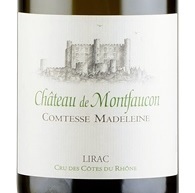 Lirac, an often-overlooked appellation of the southern Rhône just to the west of Châteauneuf du Pape, is one of two Rhône appellations that makes all three colors, reds, whites, and rosés. (Vacqueyras is the other.) From what I heard from many during my recent trip to the area, Château de Montfaucon is one of the leading producers there. … Read more
Lirac, an often-overlooked appellation of the southern Rhône just to the west of Châteauneuf du Pape, is one of two Rhône appellations that makes all three colors, reds, whites, and rosés. (Vacqueyras is the other.) From what I heard from many during my recent trip to the area, Château de Montfaucon is one of the leading producers there. … Read more
Domaine Pélaquié, Côtes du Rhône Villages Laudun Blanc (Rhône Valley, France) 2021
($15): 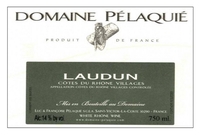 French wine regulators allow 22 (at current count) villages that produce sufficiently distinctive wine to put their name on the label along with the appellation Côtes du Rhône Villages. It is an elite club, accounting for only about ten percent of the wine from the Rhône Valley. … Read more
French wine regulators allow 22 (at current count) villages that produce sufficiently distinctive wine to put their name on the label along with the appellation Côtes du Rhône Villages. It is an elite club, accounting for only about ten percent of the wine from the Rhône Valley. … Read more
E. Guigal, Condrieu (Rhône Valley, France) 2019
($70, Vintus Wines):  Condrieu, a small roughly 500-acre, appellation in the northern Rhône valley, mandates the exclusive use of Viognier, a temperamental grape. Guigal, arguably the Rhône’s best producer overall, has (perhaps unsurprisingly) tamed it and turned it into an excellent wine. … Read more
Condrieu, a small roughly 500-acre, appellation in the northern Rhône valley, mandates the exclusive use of Viognier, a temperamental grape. Guigal, arguably the Rhône’s best producer overall, has (perhaps unsurprisingly) tamed it and turned it into an excellent wine. … Read more
M. Chapoutier, Crozes-Hermitage (Rhône Valley, France) “La Petite Ruche” 2020
($30, Folio Fine Wine Partners): 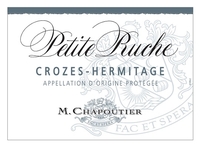 Chapoutier, one of the best producers in the Rhône Valley, is both a négociant and a grower. As a grower, the house makes estate wine from grapes in vineyards they own. As a négociant, the company buys either very newly pressed wine or grapes from their neighbors and transform it into wine.… Read more
Chapoutier, one of the best producers in the Rhône Valley, is both a négociant and a grower. As a grower, the house makes estate wine from grapes in vineyards they own. As a négociant, the company buys either very newly pressed wine or grapes from their neighbors and transform it into wine.… Read more
E. Guigal, Côtes du Rhône (Rhône Valley, France) 2019
($16, Vintus Wines):  To me, the mark of a great producer lies in their least expensive wine. Of course, Guigal is rightly known for their mind-boggling La La’s, small single-vineyard wines, La Mouline, La Landonne, and La Turque, from the Côte Rôtie, whose approximate 20,000-bottle combined annual production is highly allocated and sells for hundreds of dollars a bottle. … Read more
To me, the mark of a great producer lies in their least expensive wine. Of course, Guigal is rightly known for their mind-boggling La La’s, small single-vineyard wines, La Mouline, La Landonne, and La Turque, from the Côte Rôtie, whose approximate 20,000-bottle combined annual production is highly allocated and sells for hundreds of dollars a bottle. … Read more
Domaine Bernard Burgaud, Côte Rôtie (Rhône Valley, France) 2020
($73):  Côte Rôtie, a small appellation in the Northern Rhône that is home to spectacular red wines, allows the inclusion of up to 20 percent Viognier. Burgaud included some Viognier in their Côte Rôtie in the past, but Pierre Burgaud, who is currently in charge, told me that with climate change and better ripening of Syrah, they no longer feel the need to add Viognier to bolster the alcohol. … Read more
Côte Rôtie, a small appellation in the Northern Rhône that is home to spectacular red wines, allows the inclusion of up to 20 percent Viognier. Burgaud included some Viognier in their Côte Rôtie in the past, but Pierre Burgaud, who is currently in charge, told me that with climate change and better ripening of Syrah, they no longer feel the need to add Viognier to bolster the alcohol. … Read more
Guy Charlemagne, Champagne (France) Brut Rosé NV
($72, Jeanne-Marie de Champs Selection): 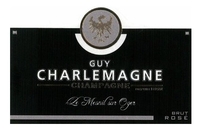 Ironically, Guy Charlemagne who is located in Mesnil-sur-Oger, one of Champagne’s great sites for Chardonnay, makes this fabulous Rosé entirely from Pinot Noir. Yes, it’s a gloriously rich powerhouse, yet it is balanced and not overdone. … Read more
Ironically, Guy Charlemagne who is located in Mesnil-sur-Oger, one of Champagne’s great sites for Chardonnay, makes this fabulous Rosé entirely from Pinot Noir. Yes, it’s a gloriously rich powerhouse, yet it is balanced and not overdone. … Read more
Domaine Gérard Tremblay, Chablis Premier Cru (Burgundy, France) Fourchaume 2020
($40, Jeanne-Marie de Champs Selection):  Fourchaume, one of top Premier Cru vineyards of Chablis, abuts the Grand Cru vineyards on the right bank of the Serein River. Generally, the wines from Fourchaume are more voluptuous, relatively speaking of course, then the wines from other 1er cru vineyards. … Read more
Fourchaume, one of top Premier Cru vineyards of Chablis, abuts the Grand Cru vineyards on the right bank of the Serein River. Generally, the wines from Fourchaume are more voluptuous, relatively speaking of course, then the wines from other 1er cru vineyards. … Read more
Don’t Miss Maison Latour’s 2020 Burgundies
Founded in 1797 and still family owned and operated, Maison Louis Latour is one of Burgundy’s top producers. In addition to their own 120 acres of vineyards (over half of which are Grand Cru, making them the largest owner of Grand Cru vineyards in Burgundy) they are one of Burgundy’s best négociants as well. … Read more
Modus Operandi Cellars, Sonoma Coast (Sonoma County, California) Pinot Noir “Vicarious” 2020
($35): 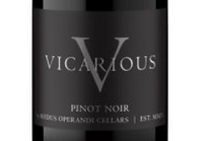 Focusing on the fruity, rather than savory, side of Pinot Noir, this ready-to-drink wine delivers ripe dark plum-like notes. This broad-shouldered wine is suavely textured with adequate acidity to balance its ripe black fruit profile. It finishes with the barest hint of sweetness. … Read more
Focusing on the fruity, rather than savory, side of Pinot Noir, this ready-to-drink wine delivers ripe dark plum-like notes. This broad-shouldered wine is suavely textured with adequate acidity to balance its ripe black fruit profile. It finishes with the barest hint of sweetness. … Read more
Modus Operandi Cellars, Petaluma Gap (Sonoma County, California) Pinot Noir Gap’s Crown Vineyard 2021
($85):  Judging from the two Pinot Noir and one Cabernet Sauvignon that I tasted, Modus Operandi favors a bold style of wine. Savory nuances add balance to this ripe,15 percent stated-alcohol, black-fruited beauty. Despite the savory notes, it comes across as slightly riper and bolder than their Vicarious bottling. … Read more
Judging from the two Pinot Noir and one Cabernet Sauvignon that I tasted, Modus Operandi favors a bold style of wine. Savory nuances add balance to this ripe,15 percent stated-alcohol, black-fruited beauty. Despite the savory notes, it comes across as slightly riper and bolder than their Vicarious bottling. … Read more
Modus Operandi Cellars, Napa Valley (California) Cabernet Sauvignon 2019
($115):  Olive-like and herbal nuances balance the dense black cassis-like fruit in this rich and concentrated Cabernet Sauvignon. This muscle-bound wine carries its 15.5% stated alcohol easily. An alluring hint of tarriness enhances the long and enveloping finish. With a luxuriously suave texture, this archetypal Napa Cabernet would be an excellent choice with a char-broiled steak tonight.… Read more
Olive-like and herbal nuances balance the dense black cassis-like fruit in this rich and concentrated Cabernet Sauvignon. This muscle-bound wine carries its 15.5% stated alcohol easily. An alluring hint of tarriness enhances the long and enveloping finish. With a luxuriously suave texture, this archetypal Napa Cabernet would be an excellent choice with a char-broiled steak tonight.… Read more
Capezzana, Vin Santo di Carmignano DOC (Tuscany, Italy) Riserva 2015
($90, Dalla Terra Winery Direct):  The bottles were opened at least a dozen yards away, but the aromas of apricots and nuts stopped all conversation as people looked for the source of the wondrous aromas. Vin Santo is a curious wine, this one especially. … Read more
The bottles were opened at least a dozen yards away, but the aromas of apricots and nuts stopped all conversation as people looked for the source of the wondrous aromas. Vin Santo is a curious wine, this one especially. … Read more
Capezzana, Toscana IGT (Tuscany, Italy) “Ugo Contini Bonacossi” 2018
($62, Dalla Terra Winery Direct):  This youthful treasure is a single vineyard Sangiovese named after Ugo Contini Bonacossi, the force behind the modern Capezzana estate who sadly passed away in 2013. The production is small, fewer than 3,000 bottles a year, because only the best grapes from this vineyard that Ugo loved go into the wine. … Read more
This youthful treasure is a single vineyard Sangiovese named after Ugo Contini Bonacossi, the force behind the modern Capezzana estate who sadly passed away in 2013. The production is small, fewer than 3,000 bottles a year, because only the best grapes from this vineyard that Ugo loved go into the wine. … Read more
Capezzana, Carmignano DOCG (Tuscany, Italy) “Trefiano” Riserva 2018
($66, Dalla Terra Winery Direct):  Capezzana produces their Trefiano Riserva, a blend of Sangiovese (80%) with equal parts Cabernet Sauvignon and Canaiolo, only in the best years. The stunning 2018, a big wine, to be sure, is balanced by spicy, savory notes and an incredible freshness. … Read more
Capezzana produces their Trefiano Riserva, a blend of Sangiovese (80%) with equal parts Cabernet Sauvignon and Canaiolo, only in the best years. The stunning 2018, a big wine, to be sure, is balanced by spicy, savory notes and an incredible freshness. … Read more
Guy Charlemagne, Champagne (France) Brut Rosé NV
($72, Jeanne-Marie de Champs Selection):  Ironically, Guy Charlemagne who is located in Mesnil-sur-Oger, one of Champagne’s great sites for Chardonnay, makes this fabulous Rosé entirely from Pinot Noir. Yes, it’s a gloriously rich powerhouse, yet it is balanced and not overdone. … Read more
Ironically, Guy Charlemagne who is located in Mesnil-sur-Oger, one of Champagne’s great sites for Chardonnay, makes this fabulous Rosé entirely from Pinot Noir. Yes, it’s a gloriously rich powerhouse, yet it is balanced and not overdone. … Read more
Maison Louis Latour, Saint Véran (Burgundy, France) “Les Deux Moulins” 2020
($35, Louis Latour, USA):  The Saint Véran appellation abuts Pouilly-Fuissé and, unsurprisingly, the wines are similar. Though when tasting the same producer’s Saint Véran next to their Pouilly-Fuissé, the latter always comes away the winner, at least until you see the prices. … Read more
The Saint Véran appellation abuts Pouilly-Fuissé and, unsurprisingly, the wines are similar. Though when tasting the same producer’s Saint Véran next to their Pouilly-Fuissé, the latter always comes away the winner, at least until you see the prices. … Read more
Maison Louis Latour, Mâcon-Lugny (Burgundy, France) Les Genièvres 2020
($24, Louis Latour, USA):  The Mâconnais, a region of Burgundy that lies south of the famed and expensive Côte d’Or, is an unexplored treasure-trove of Chardonnay-based wines. The base of the pedigree pyramid are wines labeled Mâcon-Villages, which means they came from grapes grown anywhere throughout the region. … Read more
The Mâconnais, a region of Burgundy that lies south of the famed and expensive Côte d’Or, is an unexplored treasure-trove of Chardonnay-based wines. The base of the pedigree pyramid are wines labeled Mâcon-Villages, which means they came from grapes grown anywhere throughout the region. … Read more
Domaine Gérard Tremblay, Chablis Premier Cru (Burgundy, France) Fourchaume 2020
($40, Jeanne-Marie de Champs Selection):  Fourchaume, one of top Premier Cru vineyards of Chablis, abuts the Grand Cru vineyards on the right bank of the Serein River. Generally, the wines from Fourchaume are more voluptuous, relatively speaking of course, then the wines from other 1er cru vineyards. … Read more
Fourchaume, one of top Premier Cru vineyards of Chablis, abuts the Grand Cru vineyards on the right bank of the Serein River. Generally, the wines from Fourchaume are more voluptuous, relatively speaking of course, then the wines from other 1er cru vineyards. … Read more
An Awesome Aligoté
Let me get right to the point. The 2020 Aligoté from Domaine du Cellier aux Moines is the best Bourgogne Aligoté I’ve ever had, and I’ve had one from Coche-Dury. Why is it so stunning? Firstly, this Aligoté, labelled “Sous les Roches,” comes from a vineyard in Montagny planted in 1945.… Read more
Sommariva, Conegliano Valdobbiadene Prosecco Superiore DOCG (Veneto, Italy) Brut NV
($17, Kermit Lynch Wine Merchants): 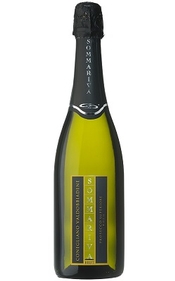 There is Prosecco and then there is the huge step up to Prosecco from the hilly Valdobbiadene – Conegliano region. Of course, it’s a mouthful to pronounce, but it’s worth remembering the distinction when buying Prosecco. … Read more
There is Prosecco and then there is the huge step up to Prosecco from the hilly Valdobbiadene – Conegliano region. Of course, it’s a mouthful to pronounce, but it’s worth remembering the distinction when buying Prosecco. … Read more
Castello di Ama, Toscana IGT (Tuscany, Italy) Pinot Nero “Il Chiuso” 2019
($48):  Castello di Ama is known for spectacular Chianti Classico. But Pinot Nero? Isn’t it too warm in Chianti Classico to grow Pinot Nero? Apparently not, judging from this energetic beauty. The expressive aromatics and savory notes suggest the Pinot Nero must be planted in a cool site. … Read more
Castello di Ama is known for spectacular Chianti Classico. But Pinot Nero? Isn’t it too warm in Chianti Classico to grow Pinot Nero? Apparently not, judging from this energetic beauty. The expressive aromatics and savory notes suggest the Pinot Nero must be planted in a cool site. … Read more
Badia a Coltibuono, Chianti Classico DOCG (Tuscany, Italy) 2020
($22): 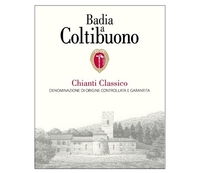 The 2020 vintage in Chianti Classico generally produced rich satisfying wines. Badia a Coltibuono’s certainly fits that mold with dark, but not black, cherry nuances. It has great concentration but more importantly, gorgeous balancing acidity that gives this mid-weight wine enormous energy. … Read more
The 2020 vintage in Chianti Classico generally produced rich satisfying wines. Badia a Coltibuono’s certainly fits that mold with dark, but not black, cherry nuances. It has great concentration but more importantly, gorgeous balancing acidity that gives this mid-weight wine enormous energy. … Read more
Fattoria Le Masse, Chianti Classico DOCG (Tuscany, Italy) 2020
($45):  An electric tension between fruit and firmness energizes this mid-weight wine. Made entirely from Sangiovese, this elegant and sculpted Chianti Classico has a bit of everything, floral aromatics, a steady frame, and a suave texture. Black cherry-like notes add charm to the finish. … Read more
An electric tension between fruit and firmness energizes this mid-weight wine. Made entirely from Sangiovese, this elegant and sculpted Chianti Classico has a bit of everything, floral aromatics, a steady frame, and a suave texture. Black cherry-like notes add charm to the finish. … Read more
Sella & Mosca, Sardegna Alghero Rosso DOC (Sardinia, Italy) “Tanca Farrà” 2019
($32, Taub Family Selections): 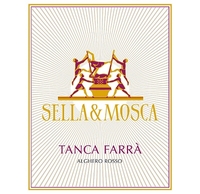 Regulations for the Sardegna Alghero Rosso DOC allow the inclusion of any Sardinian red grapes except for aromatic ones. Sella & Mosca use a seamless, fifty-fifty blend of Cannonau and Cabernet Sauvignon to achieve this beauty. Juicy black fruit enrobed with fine tannins make this suave, muscular wine a pleasure to drink now. … Read more
Regulations for the Sardegna Alghero Rosso DOC allow the inclusion of any Sardinian red grapes except for aromatic ones. Sella & Mosca use a seamless, fifty-fifty blend of Cannonau and Cabernet Sauvignon to achieve this beauty. Juicy black fruit enrobed with fine tannins make this suave, muscular wine a pleasure to drink now. … Read more
Sella & Mosca, Sardegna Alghero DOC (Sardinia, Italy) 2016
($60, Taub Family Selections):  This big but not boisterous wine shows that Sella & Mosca is equally capable with the so-called international grapes as with local ones. Made entirely from Cabernet Sauvignon, the Marchese di Villamarina delivers succulent black fruit, plenty of savory notes all wrapped in firm, not hard, tannins. … Read more
This big but not boisterous wine shows that Sella & Mosca is equally capable with the so-called international grapes as with local ones. Made entirely from Cabernet Sauvignon, the Marchese di Villamarina delivers succulent black fruit, plenty of savory notes all wrapped in firm, not hard, tannins. … Read more
Sella & Mosca, Cannonau di Sardegna DOC Riserva (Sardinia, Italy) 2020
($17, Taub Family Selections):  Sella & Mosca, despite their size — the largest estate on Sardinia — makes excellent wines. This juicy mid-weight Cannonau, the local name for Grenache, delivers crunchy red fruit combined with a hint of spice. Not a fruit bomb by any means, it actually has an engaging hint of bitterness in its long finish. … Read more
Sella & Mosca, despite their size — the largest estate on Sardinia — makes excellent wines. This juicy mid-weight Cannonau, the local name for Grenache, delivers crunchy red fruit combined with a hint of spice. Not a fruit bomb by any means, it actually has an engaging hint of bitterness in its long finish. … Read more
Maison Louis Latour, Santenay (Burgundy, France) 2020
($45, Louis Latour, USA): 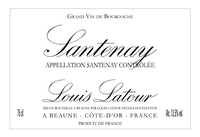 This Santenay is just one example of the great success Latour had with their village wines in 2020. Characteristic of the vintage, it has good depth that augments its charm. Supple, fresh, and long, it is a delight now — and refined for a village Santenay. … Read more
This Santenay is just one example of the great success Latour had with their village wines in 2020. Characteristic of the vintage, it has good depth that augments its charm. Supple, fresh, and long, it is a delight now — and refined for a village Santenay. … Read more
Maison Louis Latour, Mercurey (Burgundy, France) 2020
($50, Louis Latour, USA): 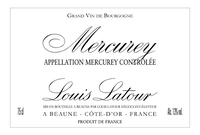 Mercurey, a village just south of the Côte d’Or in the Côte Chalonnaise, is known primarily for red wines. In general, the warmth of 2020 growing season added ripeness to these wines complementing their stoney character. That explains the appeal of this Mercurey from Latour. … Read more
Mercurey, a village just south of the Côte d’Or in the Côte Chalonnaise, is known primarily for red wines. In general, the warmth of 2020 growing season added ripeness to these wines complementing their stoney character. That explains the appeal of this Mercurey from Latour. … Read more
Maison Louis Latour, Marsannay (Burgundy, France) 2020
($45, Louis Latour, USA): 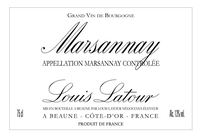 Burgundy lovers have discovered the charms of Marsannay, the northernmost village of the Côtes de Nuits. Prices have risen as a result and are poised to continue their climb because the village is in the process of having some vineyards certified as 1er Cru. … Read more
Burgundy lovers have discovered the charms of Marsannay, the northernmost village of the Côtes de Nuits. Prices have risen as a result and are poised to continue their climb because the village is in the process of having some vineyards certified as 1er Cru. … Read more
Nicolas-Jay, Willamette Valley (Oregon) Chardonnay “Affinités” 2020
($45):  Jean-Nicolas Méo of burgundy’s Domaine Méo-Camuzet, joined forces with Jay Boberg to establish a Willamette Valley winery in 2014. To limit capital outlay, they initially bought grapes, and still do, for some of their wines, like this one. This Chardonnay, a blend from several sites throughout the Willamette, is a smashing success for the 2020 vintage, a vintage for the reds that was mostly destroyed by smoke taint from the devastating wildfires. … Read more
Jean-Nicolas Méo of burgundy’s Domaine Méo-Camuzet, joined forces with Jay Boberg to establish a Willamette Valley winery in 2014. To limit capital outlay, they initially bought grapes, and still do, for some of their wines, like this one. This Chardonnay, a blend from several sites throughout the Willamette, is a smashing success for the 2020 vintage, a vintage for the reds that was mostly destroyed by smoke taint from the devastating wildfires. … Read more
Mandrarossa, Sicilia DOC (Sicily, Italy) Nero d’Avola “Cartagho” 2019
($28):  Nero d’Avola, Sicily’s emblematic grape, produces wines that vary and light and fruity to more substantial and robust. Put this one in the latter category. Earthy notes support dark fruit character. Fine tannins lends support and balance so it doesn’t come across as a “fruity” wine, although there is no lack of black fruitiness. … Read more
Nero d’Avola, Sicily’s emblematic grape, produces wines that vary and light and fruity to more substantial and robust. Put this one in the latter category. Earthy notes support dark fruit character. Fine tannins lends support and balance so it doesn’t come across as a “fruity” wine, although there is no lack of black fruitiness. … Read more
Nicolas-Jay, Willamette Valley (Oregon) Chardonnay “Affinités” 2020
($45):  Jean-Nicolas Méo of burgundy’s Domaine Méo-Camuzet, joined forces with Jay Boberg to establish a Willamette Valley winery in 2014. To limit capital outlay, they initially bought grapes, and still do, for some of their wines, like this one. This Chardonnay, a blend from several sites throughout the Willamette, is a smashing success for the 2020 vintage, a vintage for the reds that was mostly destroyed by smoke taint from the devastating wildfires. … Read more
Jean-Nicolas Méo of burgundy’s Domaine Méo-Camuzet, joined forces with Jay Boberg to establish a Willamette Valley winery in 2014. To limit capital outlay, they initially bought grapes, and still do, for some of their wines, like this one. This Chardonnay, a blend from several sites throughout the Willamette, is a smashing success for the 2020 vintage, a vintage for the reds that was mostly destroyed by smoke taint from the devastating wildfires. … Read more
